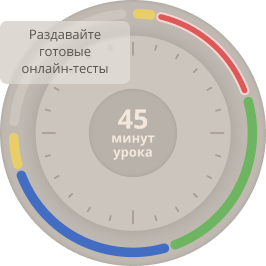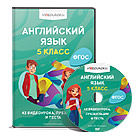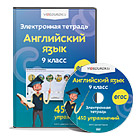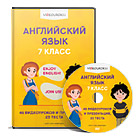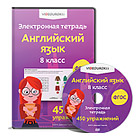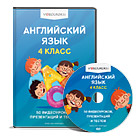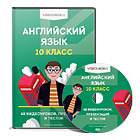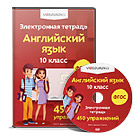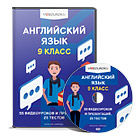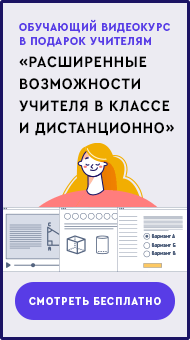Практическое занятие № 51
Тема: «Достопримечательности Москвы. Развитие навыков монологической речи»
Цель: Совершенствовать речемыслительную деятельность учащихся через различные формы работы с текстом.
Систематизировать ранее изученные сведения о столице России – Москве.
Активизировать лексико-грамматический материал предыдущих
Оборудование: 1. Учебники; 2. Раздаточный материал.
Задание 1. Заполните пропуски в предложениях, используя информацию из текста, данного ниже (15 минут):
Professor … is the founder of the Pushkin Museum.
It got its present name only in … .
The Pushkin Museum of Fine Arts periodically… .
The basis for the Pushkin Museum’s collection became … .
The international … are also held in the Museum.
THE PUSHKIN MUSEUM OF FINE ARTS
It is the largest museum of European art in Moscow. The founder of the Pushkin Museum of Fine Art is Professor Ivan Tsvetayev (father of the poet Marina Tsvetayeva). The Museum was built in Greek classical style in 1898-1912 by Roman Klein. It was originally named after Alexander III. Since 1937 it has been known as the Pushkin Museum of Fine Arts. In 1918 thousands of works were transferred from St Petersburg’s Hermitage Museum. They were a basis for the Pushkin Museum’s collections of Western Art. Later the works by Impressionists and Post- Impressionists, including Van Gogh, Gauguin, Picasso and Matisse were added. The Museum also has one of the world’s largest collection of the ancient, oriental and classical art.
The Pushkin Museum of Fine Arts periodically holds exhibitions of the art of various countries. After the World War II the evacuated Dresden Gallery had been stored in Moscow for 10 years. There were exhibitions of the Tutankhamen treasures from Egypt, and Leonardo da Vinci’s world famous Mona-Lisa. Canvases from the American Metropolitan Art Museum, the paintings of P. Picasso, M. Chagall, French Impressionists were displayed here, too.
The International musical festival Svyatoslav Richter’s December nights are also held in the Pushkin Museum. The Pushkin Museum of Fine Arts contacts with the biggest museums and galleries of the world.
Задание 2. Ответьте на вопросы по тексту, данному ниже (15 минут)
Where is the oldest Moscow circus located?
When was it opened?
Which circus has 5 different arenas?
Are Tsvetnoi Boulevard Circus and Vernadsky Prospect Circus the only circuses in Moscow?
What other kind of circuses are there in Moscow?
MOSCOW CIRCUSES.
Most people are greatly fond of circus. Russian circus and circus actors are famous all over the world.
One of the Moscow circuses is located in the centre of the city, in Tsvetnoi Boulevard. It was the only circus in Moscow between 1926 and 1971. The circus building was opened in 1880 as Solomonsky Circus. A famous clown Yuri Nikulin managed the company for fifteen years. Now in front of the building is a remarkable statue of him. The Great Moscow State Circus is located at the Vernadsky Prospect. Its building seats 3,400 people. The circus has 5 different arenas: equestrian, water, illusionist, ice rink, and light effect. Its amphitheatre is 36 metres. Performances are held each day in the afternoon and evening.
In summer there is always a traditional circus in a tent in the Central Park. There are forty big circuses, thirteen small ones and eight zoo- circuses in Moscow. They are a good idea for going out.
Задание 3. Найдите определения к выражениям в тексте, данном ниже (15 минут):
1. It is the heart of Moscow.
2. It is the heart of Red Square.
3. It was built in 1491.
4. It is the tallest tower of the Kremlin.
5. This cathedral was built in memory of Russia’s conquest of the Kazan Kingdom.
6. It was a special place of execution.
7. This monument was designed to commemorate the victory over the Poles.
RED SQUARE.
The heart of Moscow is Red Square. And the heart of Red Square is the Kremlin. The first wooden Kremlin was built by Prince Yuri Dolgoruky, then it was rebuilt in the reigns of Ivan Kalita, Dmitri Donskoy and Ivan III. By the end of the 15th century new brick walls completed the construction of the present Kremlin with its beautiful red walls and towers crowned with ruby stars. The Spasskaya Tower is the symbol of the Kremlin. It was built in 1491 and is 71 metres high. The tallest Trinity Tower, the Kutafia Tower, the Tower of the Senate, the St. Nicholas Tower are unforgettable for everyone. Near the Kremlin you can see Pokrovsky Cathedral which is also known by its folk name- the Vasili Blazhenny Cathedral. It was built at the end of the 16th century by architects Barma and Posnik in memory of Russia’s conquest of the Kazan Kingdom in 1552.
In front of this ancient Cathedral you can see a monument to Minin and Pozharsky. It was designed by I. Martos in 1818 to commemorate the Russian victory over the Poles in 1612. In the middle of Red Square there was a special place of execution- Lobnoye Mesto.
There are some other places to see in Red Square. They are Mausoleum, the State History Museum, the Great Kremlin Palace with its armoury and Granovitaya Palata, the Bell Tower of Ivan the Great, Annunciation and Archangelsky Cathedrals and some others.
Задание 4. Допишите и инсценируйте диалоги в парах (25 минут):
1
A: Excuse me, sir, I’m a stranger here. Will you tell me how to get to the centre of Moscow?
B: There is an express bus that will take you to the nearest metro station.
A: How long will it take me?
B: About half an hour or so.
A: Can I take a taxi?
B: Certainly, you can. The taxi stop is over there, in the square.
A: Oh, thank you very much.
B: You are welcome.
2
A: Excuse me, where’s the nearest metro station?
B: It’s about 200 metres down the road.
A: And how do I get to Red Square?
B: I’m sorry. I don’t know, I’m a stranger here, too. Ask the policeman.
A: Thank you, anyway.
3
A: Excuse me, do you know where the State Tretyakov Gallery is, please?
B: Go straight down to the traffic lights, then turn left and it’s the second street on your right.
A: Thank you.
4
A: Does the tram go to the centre?
B: No, it doesn’t. You’ll have to change for No. 10. It’ll take you right to the centre.
A: Where is the tram stop?
B: It’s right in front of you, across the street.
A: Thanks a lot.
Залание 5. Переведите следующие предложения на английский (20 минут)
Москва может гордиться рядом уникальных достопримечательностей, среди которых Кремль, построенный как крепость под руководством итальянских архитекторов.
Красная площадь первоначально была рыночной площадью и местом проведения народных собраний, на ней находятся Мавзолей В. И. Ленина и захоронения советских политических деятелей, а также внушительный Собор Василия Блаженного с многочисленными куполами.
Около Кремля простираются старый район Китай-города, который когда-то был кварталом купцов, и Белый город с Храмом Христа Спасителя, восстановленным в 1990-х годах.
Среди знаменитых древних построек Кремля — Архангельский собор, Успенский Собор и Грановитая палата, где цари устраивали приемы, Большой Кремлевский дворец, Царь-пушка и Царь-колокол.
К другим достопримечательностям Москвы относятся широкие бульвары, образующие концентрические кольца, семь небоскребов в стиле, напоминающем готику, Останкинская телебашня и Ботанический сад.
6. Богато украшенное московское метро считается самым красивым метро в мире.
Критерии:
Оценка «5» - Поставленные задачи (чтение и перевод текста, составление высказываний ответы на вопросы, составление и инсценировка диалога) решены полностью, применение лексики адекватно коммуникативной задаче, грамматические ошибки либо отсутствуют, либо не препятствуют решению коммуникативной задачи
Оценка «4» - Коммуникативная задача решена полностью, но понимание текста незначительно затруднено наличием грамматических и/или лексических ошибок.
Оценка «3» - Коммуникативная задача решена, но понимание текста затруднено наличием грубых грамматических ошибок или неадекватным употреблением лексики.
Оценка «2» - Коммуникативная задача не решена ввиду большого количества лексико-грамматических ошибок или недостаточного объема текста.
Литература, рекомендуемая к выполнению практической работы:
1) Восковская А.С., Карпова Т.А. Английский язык. – Ростов н/Д: Феникс, 2014.
2)Агабекян И. Английский язык для СПО. – Ростов н/Дону: Феникс, 2012
Контрольные вопросы:
1. What circus is the oldest in Moscow? 2. What was Yuri Nikulin? 3. Most people are greatly fond of circuses, aren’t they? 4. How many different arenas are there in Vernadsky Prospect Circus? 5. Which tower is the symbol of the Kremlin? 6. What is the folk name of Pokrovsky Cathedral? 7. Who built Pokrovsky Cathedral? 8. What was Lobnoye Mesto used for? 9. Where is Granovitaya Palata located? 10. What museum is the largest museum of European art in Moscow? 11. Whose father was Professor Ivan Tsvetayev? 12. What was the original name of the museum?


